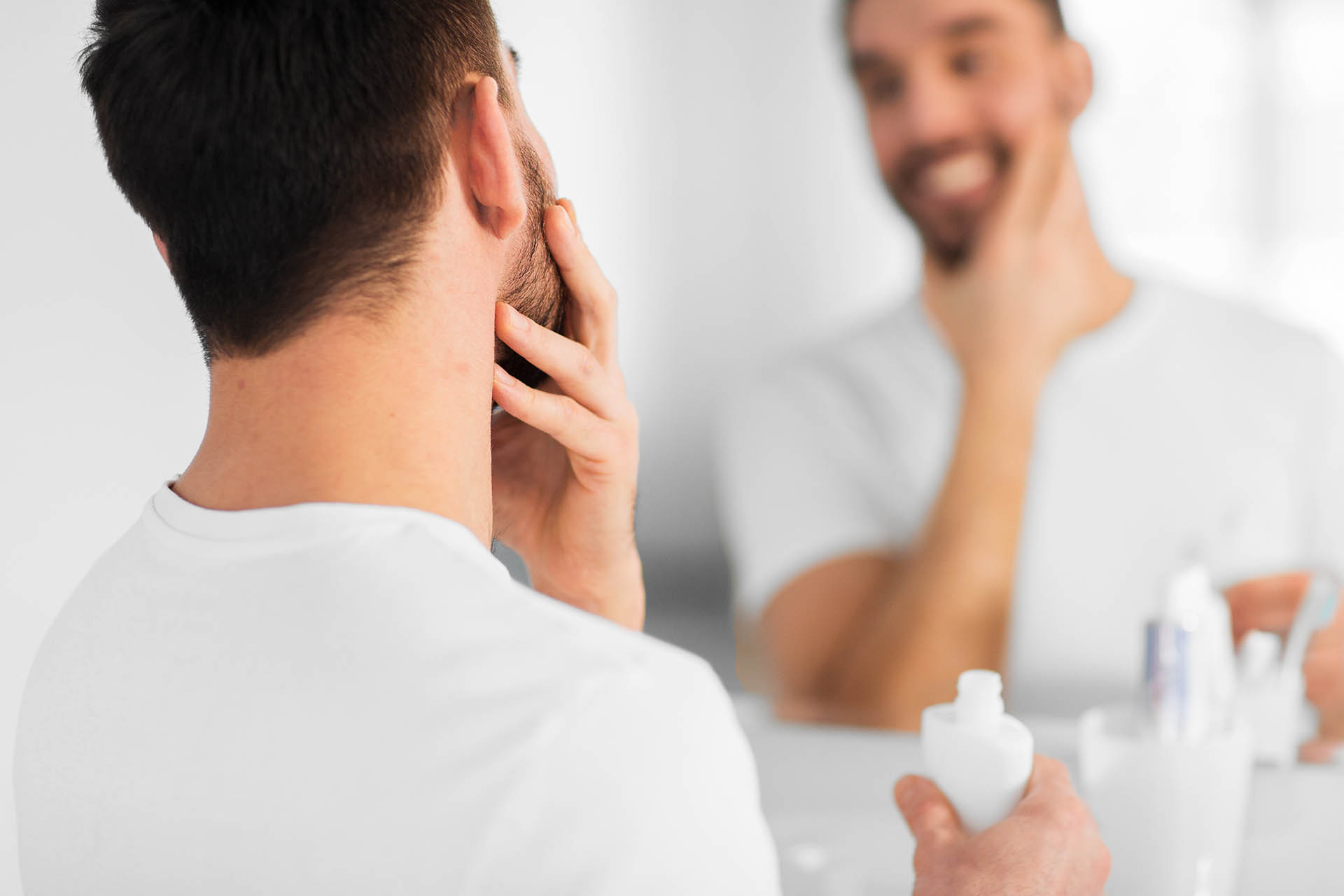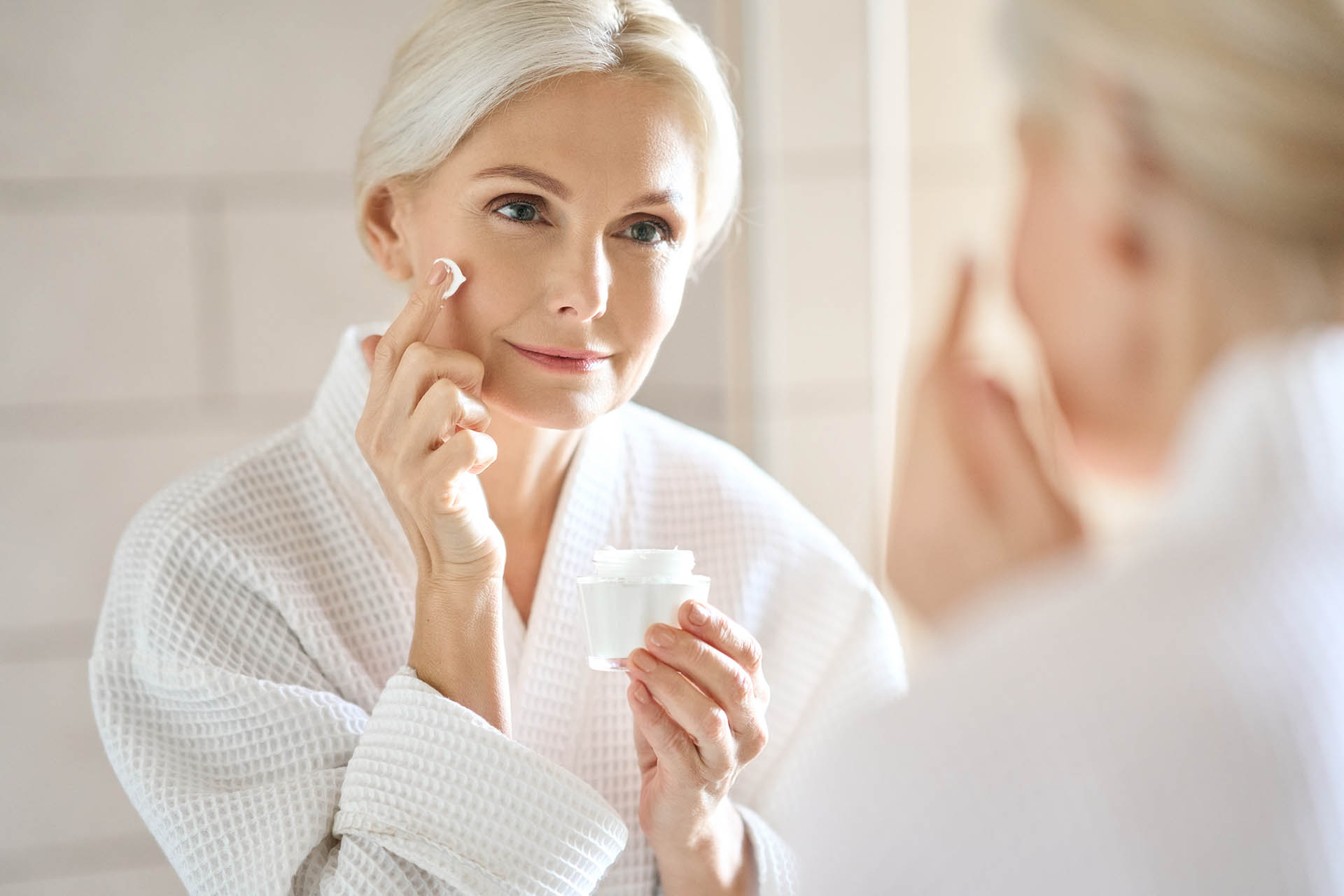The importance of sunscreen when it comes to looking after our skin is no secret. However, some of the finer details, like how to choose a sunscreen and how often to apply it, can be a bit less clear. Here are answers to some of your burning questions.
All About Sunscreens
What’s the difference between UVA and UVB?
What does broad spectrum mean?
Can sunscreen be applied to babies?
Physical versus chemical sunscreens – what’s the difference and is one better?
There are so many sunscreens out there – which one should I choose?
I have sensitive skin and tend to react to sunscreen. What should I look for? Am I allergic?
What’s the difference between UVA and UVB?
The main ultraviolet rays emitted by the sun that impact the skin are ultraviolet A (UVA) and ultraviolet B (UVB) rays.
UVB rays only penetrate the top layer of the skin, the epidermis, and are the main cause of sunburn and skin cancer.
UVA rays penetrate more deeply into the skin, into the dermis, and are the main cause of skin ageing.
However, both UVA and UVB rays contribute to skin cancer, sunburn and skin ageing.
UVB radiation is strongest in the middle of the day, but UVA is fairly constant throughout the day, which is why sunscreen should be worn at all times, not just when it’s sunny.
Window glass blocks some UVB radiation, but doesn’t block UVA radiation. This is why it’s important to wear sunscreen, even when indoors.
UV rays reflect off surfaces such as pavement, water, sand and snow. This is why you can get sunburnt in the shade, and why it’s important to wear sunscreen, in addition to protective clothing and a hat.
What is SPF?
SPF stands for Sun Protection Factor, and is a measure of how well a sunscreen protects the skin from sunburn. It’s the ratio of how long the skin takes to burn with sunscreen on, versus how long it would take to burn without sunscreen on. For example, if your skin usually takes 10 minutes to burn, applying a sunscreen with an SPF 30, it would take 10 x 30 = 300 minutes to burn. However, this doesn’t mean you can spend 300 minutes in the sun without getting sunburnt, as sunscreens become less effective and wear off over time. This is why reapplying sunscreen is so important. In addition, the SPF is calculated based on applying 2mg of sunscreen for every cm2 of skin, which is more than most people apply.
SPF is primarily a measure of how good the sunscreen is at protecting you from UVB, as UVB rays are the main cause of sunburn. It’s not a good measure of how effective the sunscreen is at protecting you from UVA.
What does broad spectrum mean?
For a sunscreen to be labelled broad spectrum, it must protect against both UVA and UVB radiation. In Australia, all primary sunscreens must be broad spectrum, and the UVA protection factor must be at least ⅓ of the labelled SPF (the UVB protection factor). So, if a sunscreen is SPF 30, it’s UVA protection factor must be at least 10.
How should I apply sunscreen?
Sunscreen should be applied 20 minutes before sun exposure, to clean, dry skin.
Studies have shown that most people apply less than half the recommended amount of sunscreen.
To achieve the SPF listed on the sunscreen, you need to apply 2mg of sunscreen for every cm2 of skin. For adults, this equates to 5mL (one teaspoon) for the face and neck, each arm, leg, front of the body and back of the body. This is a total of 35mL (7 teaspoons) for the whole body. If you consider that many sunscreens come in 50mL or 100mL tubes or bottles, you should be getting through a lot of sunscreen! Make sure you apply sunscreen to all exposed areas of skin, including the ears, back of the neck, lips and feet.
Sunscreen should be reapplied every two hours, regardless of the stated water resistance. Sunscreen should be reapplied after swimming, sport, sweating and towel drying the skin, as these activities can reduce its effectiveness.
Can sunscreen be applied to babies?
For children under 12 months, the best method of sun protection is seeking shade and using protective clothing. Sunscreen is not recommended for babies under 6 months, but can be used beyond this age.
Physical versus chemical sunscreens – what’s the difference and is one better?
Physical (or inorganic) sunscreens refer to the ingredients zinc oxide or titanium dioxide, whereas chemical (or organic) sunscreens refer to all other sunscreen ingredients. Sunscreens may contain only physical ingredients, only chemical ingredients, or a combination of both.
Chemical sunscreens work by absorbing UV radiation to prevent it from damaging the skin, while physical sunscreens both reflect and absorb UV radiation.
Physical sunscreens were traditionally thicker and left a white cast on the skin, but newer formulations are much lighter and more sheer. Chemical sunscreens usually require a combination of ingredients to protect against both UVA and UVB, and may be more likely to cause sensitivity or allergy.
No one type of sunscreen is better than another. The best sunscreen is the one that you feel comfortable using. As long as it’s broad spectrum and SPF 50+, choose whichever one you like best.
There are so many sunscreens out there – which one should I choose?
Ultimately, the best sunscreen is the one that you will use. There’s no point buying an expensive physical sunscreen if it leaves a white cast and you never wear it. In Australia, any sunscreen with an SPF of 50+ is a good choice, whether it be chemical or physical or a combination, and a lotion, gel or cream.
Do I need to be concerned about nanoparticles?
Physical sunscreens consist of small particles of zinc oxide or titanium dioxide. To improve the cosmesis of these sunscreens and ease of application, smaller particles called nanoparticles were developed. Concerns have been raised that these nanoparticles may be absorbed into the bloodstream, causing harm. However, the evidence does not support these claims, and the use of physical sunscreens containing nanoparticles has been deemed safe by numerous bodies, including the Therapeutic Goods Administration.
Can I use a spray sunscreen?
The Cancer Council advises against the use of spray sunscreens. This is based on research demonstrating that it’s very difficult to apply enough of these products to achieve the UV protection stated on the packaging. It’s generally recommended to look for a cream or lotion instead.
I have sensitive skin and tend to react to sunscreen. What should I look for? Am I allergic?
Intolerance of sunscreen may be due to irritation from or allergy to any of the sunscreen ingredients, as well as other ingredients in the formulation, including fragrance. In general, physical sunscreens tend to be less irritating than chemical sunscreens, and choosing a fragrance-free product is always best. If you’re concerned you may have an allergy to a sunscreen ingredient, it’s possible to be referred for patch testing, to test for allergies to each ingredient in a sunscreen.
Can I use a moisturiser with SPF instead of sunscreen?
In general, it’s best to use a separate sunscreen and moisturiser. Part of the reason is simply application technique: sunscreens are designed to be applied quite thickly to achieve the SPF on the label, whereas moisturisers are not. In addition, sunscreens are more likely to be water resistant and tend to stay on the skin better.
In Australia, products classified as ‘therapeutic sunscreens’ are subject to more stringent regulations by the Therapeutic Goods Administration than ‘cosmetic sunscreens’. Therapeutic sunscreens include primary sunscreens (products whose primary purpose is UV protection), as well as moisturisers with an SPF greater than 15. Products classified as ‘cosmetic sunscreens’, which include makeup and moisturisers with an SPF of 15 or lower, are not subject to the same regulations.
Using a moisturiser with SPF is definitely better than not using an SPF product at all – just make sure you apply plenty of it.
My makeup has sunscreen in it. Is that enough?
No! To achieve the SPF listed on your makeup, you need to apply 2mg of sunscreen for every cm2 of skin. This is about 10 to 15 times more than what most people actually apply. In addition, in Australia, makeup with SPF is classified as a cosmetic sunscreen rather than a therapeutic sunscreen. This means it’s not subject to the same regulations and testing as a therapeutic sunscreen, so you can’t be as confident that it does what it claims. It’s far safer to apply a separate sunscreen underneath your makeup.




